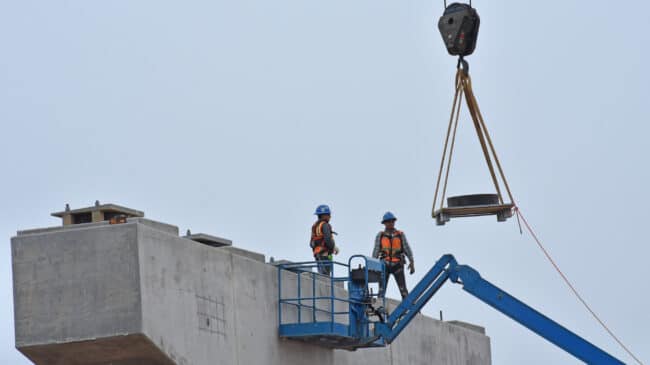These are boom times for revenue-risk design-build-finance-operate-maintain public-private partnership highway and bridge projects. The current pipeline of these types of projects in the United States includes three huge projects in Atlanta being offered by the Georgia Department of Transportation, a planned $2 billion bridge across the Mississippi River planned by the Louisiana Department of Transportation and Development, the North Carolina transportation department’s $3.1 billion I-77 South express toll lanes project and four express toll lane projects planned by Tennessee Department of Transportation (DOT).
In addition, Possible additions to this list are Illinois DOT’s first express toll lanes project on I-55 and Virginia DOT’s extension of express toll lanes on the I-495 Beltway to, or across, the Woodrow Wilson Bridge.
I did some back-of-the-envelope estimates of the capital costs of this set of projects and came up with $31 billion. There has never been a revenue-risk public-private partnership (P3) pipeline of this magnitude in this country.
So the obvious next question is: What kind of demand for tax-exempt private activity bonds (PABs) would this pipeline generate?
To make an estimate, I referred to my database of revenue-risk design-build-finance-operate-maintain (DBFOM) highway and bridge projects and selected the 11 that have been financed since 2010. The average fraction of capital costs accounted for by private activity bonds was 31%.
There are a few large exceptions: 60% for the small Belle Chasse bridge and tunnel replacement project in Louisiana and 81% for the much larger North Tarrant 3C express lanes on Interstate 35 in the Dallas-Fort Worth metroplex.
The forthcoming pipeline of mostly very large P3s might lead to a higher fraction of the cost needing to be met by PABs. But even at just the 31% average, that would take $9.6 billion. If they averaged 40%, the PABs demand would be $12.4 billion.
The U.S. Department of Transportation’s Build America Bureau informed me (on Dec. 13, 2024) that as of that date, $18.677 billion of private activity bonds have been issued, another $4.925 billion in bonds have been allocated but not issued yet, and there are $2 billion in pending applications. That leaves just $4.4 billion available for new applications if all of the pending ones are approved.
To put that $4.4 billion in perspective, remember that PABs are being used for availability-payment P3s as well as revenue-risk P3s. My table shows that as of last year, over $9 billion worth of PABs have been used to help finance availability payment (AP) projects compared with $5.5 billion for revenue-risk P3s. There will very likely be continued demand for PABs for AP as well as revenue-risk (RR) projects in the forthcoming reauthorization period.
In my view, figuring out a new cap beyond the current $30 billion cap is a futile exercise, especially if the 2026 federal transportation bill reauthorization is for five long years. Rather than a new cap, I think we should make the case for removing the cap.
When Congress first authorized private activity bonds in 2005 to help finance public-private partnership projects, this was seen as an experiment, so the total amount was capped at $15 billion. Demand first increased slowly, but it’s now increasing much faster. In 2021 Congress doubled the cap to $30 billion, and we are already getting close to that total. To me this says that private activity bonds for transportation infrastructure are no longer experimental.
Private activity bonds should be ‘mainstreamed,’ just like tax-exempt municipal bonds. PABs were devised to create a level playing field in project finance between projects financed and built by government agencies and a new generation of projects financed and built by private-sector entities, under long-term contracts with public agencies. As long as the public sector continues to play a key oversight role (as the public partner), there is no reason to continue an arbitrary cap on PABs for transportation infrastructure.
Back in 2014, the House Transportation and Infrastructure Committee created a bipartisan special panel on public-private partnerships. It explained their emerging value in both finance and governance of large-scale infrastructure projects. Besides endorsing the continued use of PABs for highway and transit projects, the special panel proposed that the scope of private activity bonds be expanded to include airports, docks, wharves, maritime and inland waterway ports. I’m not aware of any subsequent congressional interest in such an expansion, but as we approach the 2026 transportation bill reauthorization, it may be time to consider this.
Some may object that airports and seaports already have a kind of tax-exempt PAB, under 23 USC 142(a). But those bonds are offered only to governments for government-run projects. They are not usable by private partners in long-term transportation P3 concessions.
As Congress considers increasing transportation private activity bonds, expanding their scope (as the special committee recommended) would strengthen the case for removing the cap. The addition of airports and seaports would make it even harder to estimate how much higher to make the cap. Better to accept that PABs are no longer experimental and enable the supply to meet whatever the demand turns out to be.
My guess is that the biggest obstacle to removing the cap would be Congress’s Joint Committee on Taxation (JCT). Its usual argument against any expansion of tax-exempt financing is that this would reduce the U.S. Treasury’s revenue from interest paid by the buyers of taxable bonds. The JCT’s premise is that if PABs were not available, the same projects would go forward, but would be financed by taxable bonds.
My assessment is that the public-private partnership transportation industry has grown faster than many expected because of the availability of tax-exempt private activity bonds. My guess is that most or all of the major bridge, highway, and tunnel projects financed since 2005 via private activity bonds would not have been developed at all or would have been financed many years later via tax-exempt municipal bonds.
The growing P3 industry will need to be prepared to counter this JCT argument as part of making the case for both removing the cap and expanding the scope of tax-exempt PABs for transportation infrastructure.
A version of this column first appeared in Public Works Financing.

